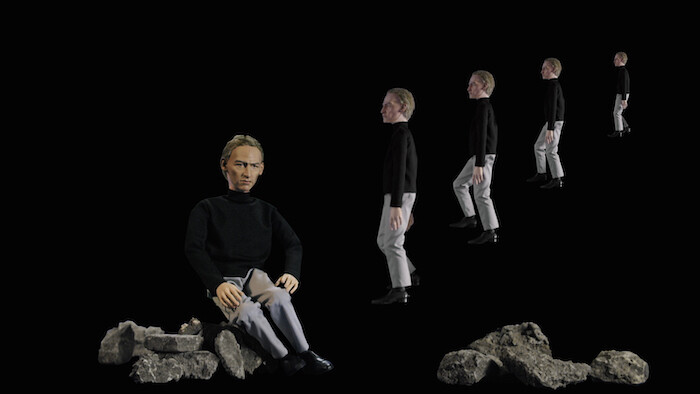Categories
Subjects
Authors
Artists
Venues
Locations
Calendar
Filter
Done
June 21, 2021 – Review
Glasgow International
Rosanna Mclaughlin

On my way to Tramway in Glasgow’s Southside I spot the artist Jenkin van Zyl walking past the McDonald’s on Pollokshaws Road. I know it’s van Zyl because I watched an online video about his make-up routine. He’s wearing prosthetic horns, hooks for hands, and nothing much on the bottom half, except for some strapping that reveals pretty much the whole of his arse. Van Zyl’s film Machines of Love (2020–21), showing at Tramway as part of Glasgow’s biennial arts festival, unfolds like a World of Warhammer cosplay fantasy with heavy shades of Paul McCarthy, in which a group of orc-like people with rat teeth and squashed noses conduct squalid sex games in an underground lair. The prosthetics are impressive, yet while van Zyl has understood the look, after 40 minutes of writhing around it’s less clear what he wants to say with it: a problem endemic in a culture that specializes in polishing and grafting pre-existing aesthetics.
The theme for this year’s festival is “attention.” During an era in which convoluted curatorial agendas have become de rigueur, director Richard Parry has opted for the opposite approach, picking one so open that you’d be hard pressed to find an artwork to …
February 8, 2019 – Review
Cécile B. Evans’s “Amos’ World”
Chris Sharratt

In the world of self-regarding architect Amos, there’s really only one thing that matters—Amos. There he is, sensibly chic in a black roll-neck sweater and neat gray trousers: “I want to build something important. I want to change the world. I want to express myself.” Amos is Cécile B. Evans’s amalgam of the twentieth-century starchitects who shaped the post-war built environment. Conceived as a mock TV series set in a Brutalist housing estate, her exhibition at Glasgow’s Tramway comprises three separate videos (or “episodes”). Made between 2017 and 2018 and collectively titled “Amos’ World,” each is screened concurrently in accompanying installations with soundtracks played on headphones. Dotted around the space are props and sets used on screen: scale-model shelves of colored binders, a miniature forest. As “Amos’ World” suggests, the egoistic visionaries Amos parodies were not ultimately in control of their designs. Evans emphasizes this point by rendering Amos as a jerky puppet.
Recent decades have seen the tearing down or repurposing of many of these architects’ buildings. Yet, Evans suggests, Amos has a far more influential contemporary equivalent in today’s social media monopolies and search engine monoliths—data architects whose mission is to “organize the world’s information” and …